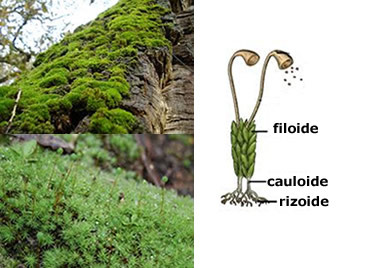O Petroleum it is a homogeneous mixture of several organic substances, mainly hydrocarbons (compounds whose molecules have only carbon and hydrogen atoms), and inorganic substances. It is found deep in the earth's crust. When in oceanic regions, it is necessary to use an extraction platform to obtain it as shown below:

Oil extraction platform in an oceanic region
Regardless of the region where it was extracted, the Petroleum, which has a black color, always has different amounts of chemical substances. For this reason, it is classified as light, medium or heavy.
Oil, in its raw form (as it is extracted), has no major use. However, the most varied substances that constitute it have fundamental uses in the daily lives of human beings.
For the substances present in oil to be used, it is necessary to separate each of the components present. In addition to being separated, petroleum components can also undergo other chemical processes (transformations from one material to another) to further increase the number of substances that can be obtained.
THE component separationof oil involve several processes. In this text, we will focus only on the initial stage of separation, which is thefractional distillation.
a) Petroleum fractions
The process of separating petroleum components is generally called refining, and the substances that are separated are called fractions. The best known fractions of petroleum are:
Gasoline (fuel for cars and motorcycles, for example);
Kerosene (fuel for aircraft, for example);
Naphtha (used as a raw material for the production of plastic);
Diesel oil (fuel for trucks, for example);
Lubricant (to lubricate car engines);
asphalt mass (used for paving streets);
Bitumen (used to perform waterproofing);
Paraffin (used in the manufacture of candles, for example);
Liquefied petroleum gas (used as fuel in the stove).
b) Oil desalination
In this process, an amount of water is added to the oil to dissolve any and all salt that is present. As oil is less dense than water, being on top of it, this water is then separated with oil salts using the decantation method.
c) Fractional distillation of petroleum components

Fractional distillation towers in an oil refinery
The most basic method to carry out the separation of petroleum components is fractional distillation. It is used because its basic principle is the difference in the boiling point of liquids present in a homogeneous mixture.
During the fractional distillation, the oil is subjected to heating and different pressures, which makes its components pass to the gaseous state. Each substance in the gaseous state has a different density (due to its different boiling point) and As the gases pass through the obstacles present in the distillation tower, they occupy specific areas of this tower. When gas enters one of these areas, it starts to cool and returns to a liquid state.

Schematic representation of a fractionation tower
In the image above, we can have a better idea of how oil distillation takes place. At the top of the tower are the fractions with the lowest boiling point; at the bottom are the fractions with the highest boiling point. This is because substances with a lower boiling point are able to cross the fractionation tower obstacles more easily, occupying higher regions.
By Me. Diogo Lopes Dias


